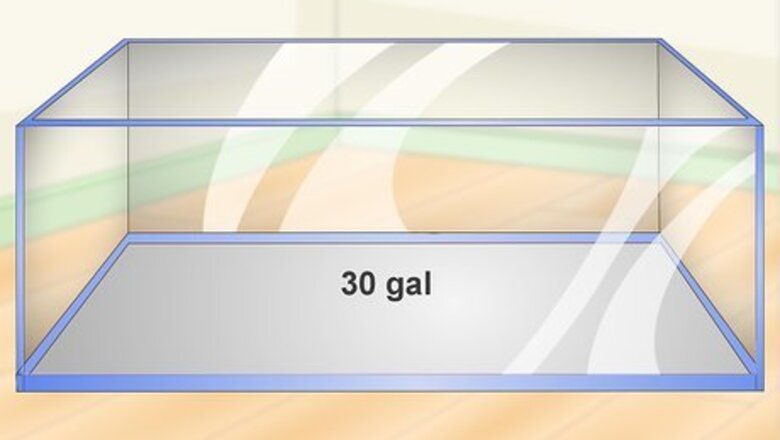
views
Setting up the Tank
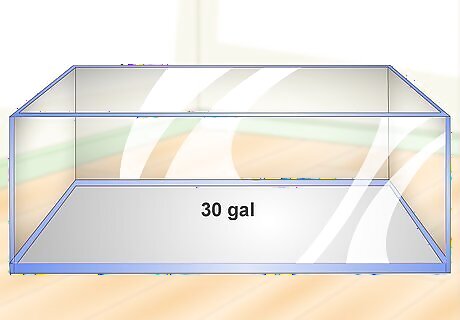
Get a tank that’s at least 30 US gal (110 l). Don't house your fish in a tank that's under 30 US gal (110 l), even if you just have one. If you have more than 5 Pearl Gourami in one tank, you'll need an additional 6 US gal (23 l) of swimming space per fish. If you’re housing your Gourami with other types of fish, make sure that there’s enough space for all of them so they don’t fight or get sick. It’s always best to get a tank that’s too large rather than getting a tank that’s too small.
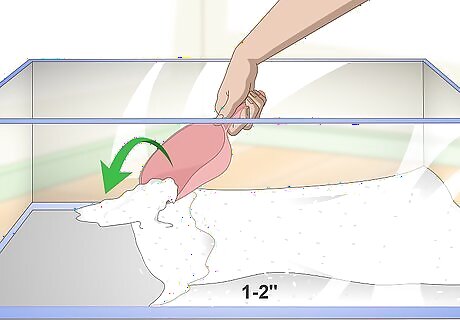
Pour a 1–2 in (2.5–5.1 cm)-layer of sand into the bottom of the tank. Pearl Gourami naturally live in places where there is sand on the bottom of the ocean floor. You can also use fine-gravel as the substrate on the bottom of the tank. Purchase sand or fine-gravel at a pet store or online. Substrate like sand or gravel houses beneficial bacteria and will give the plants in your tank somewhere to take root. The fish are often more eye-catching with dark colored sand or gravel.
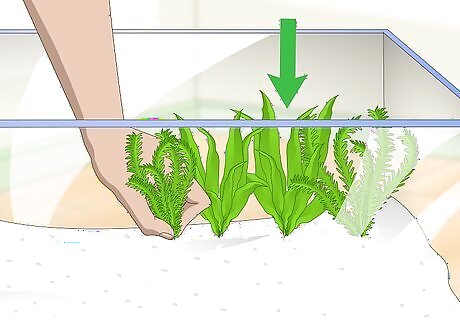
Add java fern and anacharis plants to the bottom of the tank. These plants will clean the water and give an alternate food source for the Pearl Gourami. Place the plant’s roots into the substrate that you laid down so that the plant is standing upright. Space the plants 2–3 in (5.1–7.6 cm) apart so that the fish can swim through the plants. You can find both of these plants online and at most pet or fish stores. Most 30 US gal (110 l) tanks have 6-8 plants on the bottom of the tank.
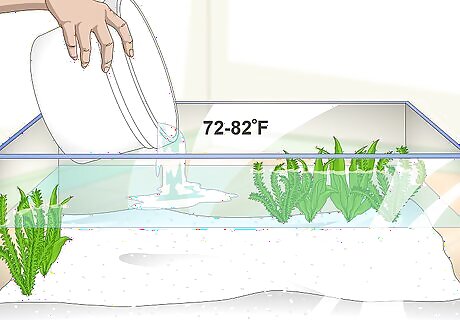
Fill the tank with fresh water that’s 72–82 °F (22–28 °C). The fish will thrive in water that’s around room temperature. Do not add water that’s too cold or too hot because it could kill the fish. If the temperature fluctuates in the area where you’re keeping the fish, purchase a water heater to maintain the temperature in the tank. Don’t leave the tank near a window if it’s too cold or hot out because it could alter the temperature of the water in the tank.
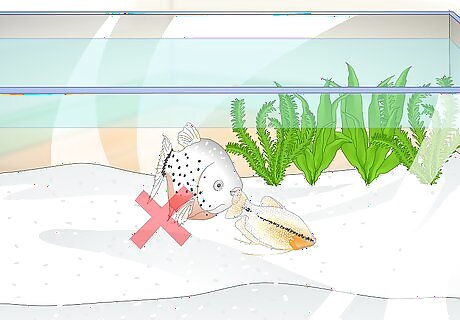
Don’t house your fish with larger or overactive fish. Get peaceful fish that won’t bite or nip at your Gourami. Overactive and larger fish will stress your Gourami out which may lead to more serious health issues. Gourami can get along with nearly any other kind of fish as long as they long as they aren't overly aggressive or active. Good fish options to get with Gourami include tetras, danios, and guppies.
Feeding the Fish
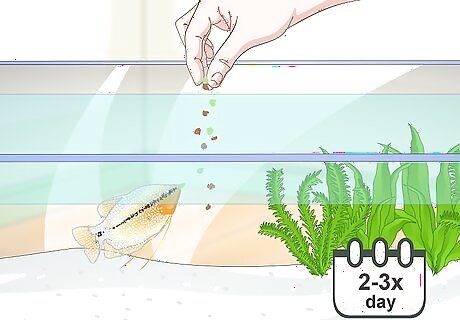
Feed the fish a small amount of food 2-3 times per day. Pearl Gourami are omnivores and will eat just about any fish food that fits in their mouths. Because of this, you can feed them flakes, live food, or frozen food. Sprinkle the food on top of the water 2-3 times per day and watch them eat. You can purchase fish food online or at a pet store. Examples of live food that Pearl Gourami eat include brine shrimp and glass worms. Pearl Gourami will also eat algae-based flakes or pellets. Make sure that the food you get is small enough to fit in your fish’s mouth.
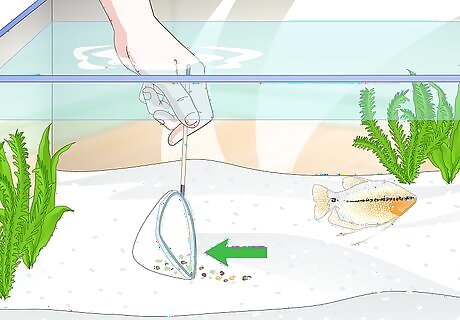
Remove any leftover food that they don’t eat. Pearl Gourami will eat until they are full so it’s good to remove any leftover food so it doesn’t create harmful bacteria in your tank. When the Pearl Gourami stop showing interest in the food, remove the leftovers from the tank. Use a fish net to lift up any food that’s floating in the water and flush it down the drain or throw it in the trash.
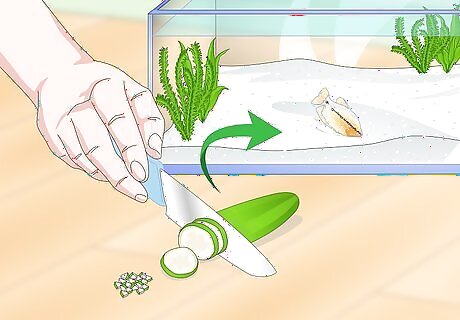
Cut up small pieces of zucchini to vary their diet. Varying the diet of your Gourami will help keep them healthy for the long run. Wash the zucchini thoroughly under cold water first to remove any harmful pesticides that could kill your fish. Then, cut the vegetable into tiny .5 cm × .5 cm (0.20 in × 0.20 in) or smaller pieces and drop them into the water. The zucchini should completely replace a feeding. You can do this once or twice a week to keep your Pearl Gourami happy and healthy, although it isn't necessary.
Maintaining the Tank
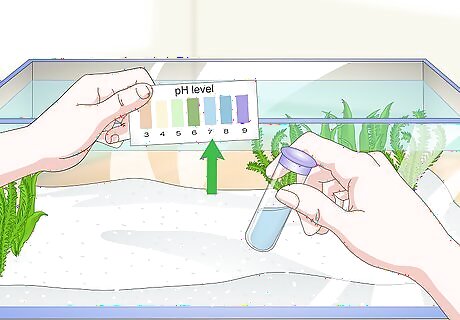
Test the water’s pH and hardness. Pearl Gourami thrive in water that is between 6 - 8 pH and with a water hardness of 5 - 19dH. You can purchase a water test kit online or at most fish stores. Test the water with the kit. If the water’s hardness and pH fall within those parameters, you don’t have to do anything to the water. Typically, tap water falls within these parameters. If your water does not fall within those parameters, you can amend it to increase or decrease the hardness and the pH level. In the wild, Pearl Gourami live in water with a high acidity level.
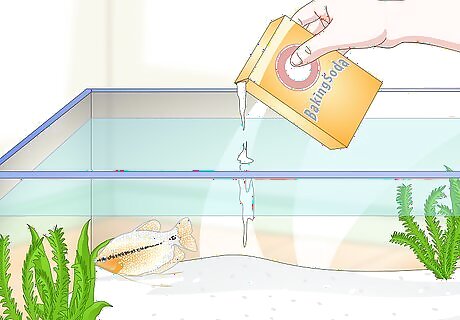
Amend the water if necessary. To raise the water’s pH level, add 1 gram (0.035 oz) of baking soda to every 1 gallon (3,800 ml) of water in your tank. If you need to lower the water’s pH level, you can add an all-natural piece of driftwood in the bottom of your tank. If your water is too hard, replace 10-20% of the water in the tank. If it’s too soft, you can add a water re-mineralizer to it. Wait a day after adding the amendments and then test the water again. You can purchase the piece of driftwood from a pet store or online. It shouldn't have any chemicals or dyes in it. Boil the driftwood in water for 5-10 minutes so that it doesn't discolor the water in your tank.
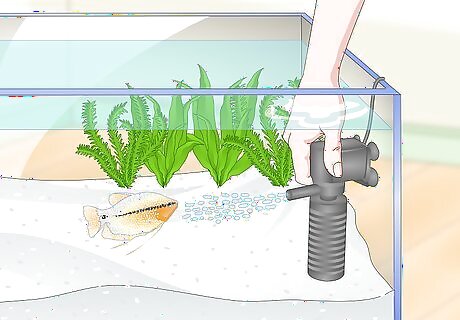
Add a filter to keep the water clean. Gourami are vulnerable to bacterial diseases caused by dirty water. A filter will recycle the water in the tank and keep the water fresh between cleanings. Find a filter that is suitable for the size of tank that you own, then follow the instructions that came with the filter to install it to your tank. You don't need an air pump because Pearl Gourami get oxygen from the surface of the water.
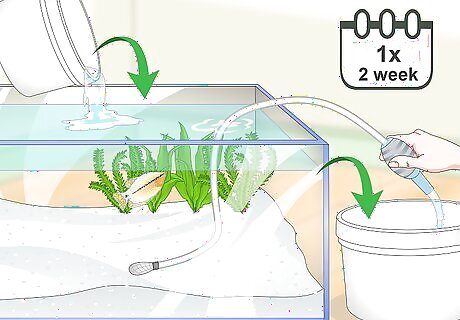
Clean the tank once every 2 weeks to avoid bacteria buildup. Pearl Gourami are susceptible to fin rot and other diseases associated with harmful bacterial buildup. Use an aquarium siphon to drain and replace 10-20% of the water into a bucket or the sink. Then, wipe down any excess algae on the tank walls. Gradually changing your water over time will prevent you from shocking your fish and changing the chemical balance of the water. If your fish get sick, you can add an anti-bacterial fish medicine to the water to control the infection. Other sicknesses that your fish may develop from a dirty tank include dropsy, fish fungus, and swim bladder disease.




















Comments
0 comment